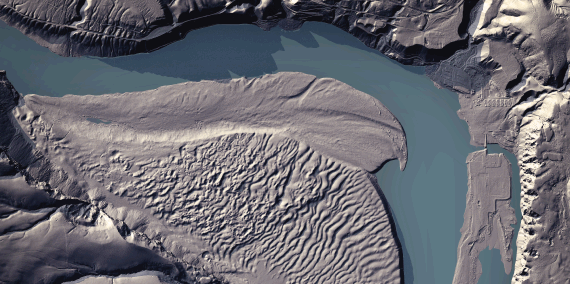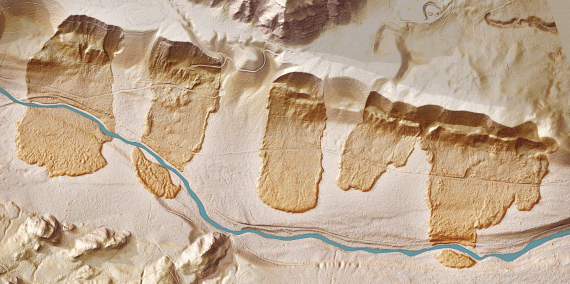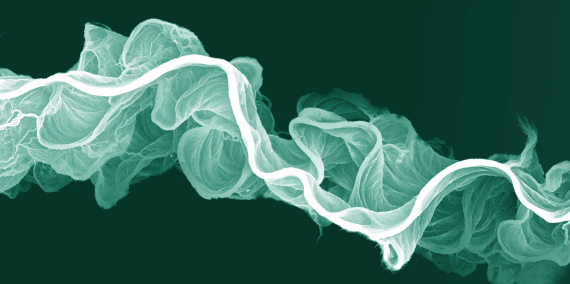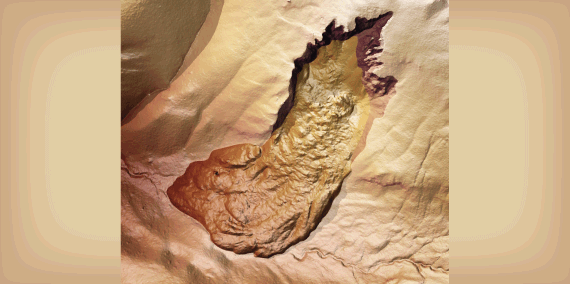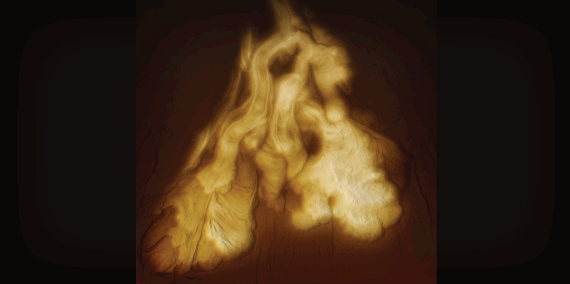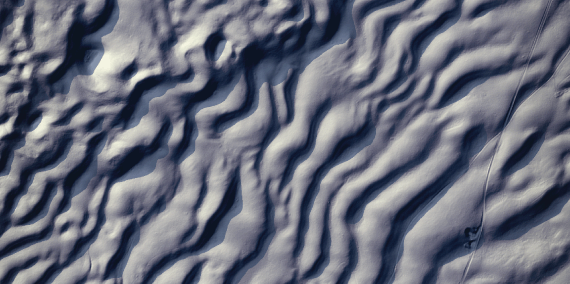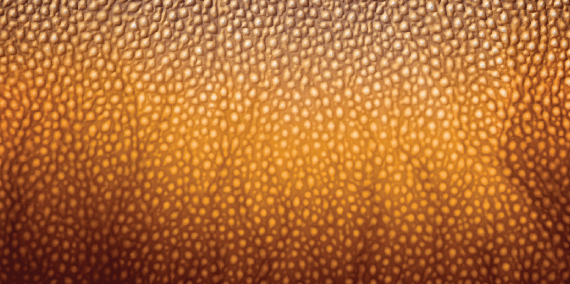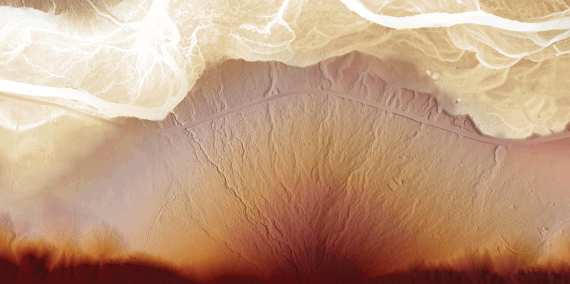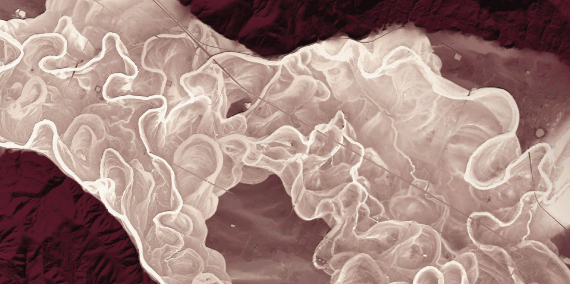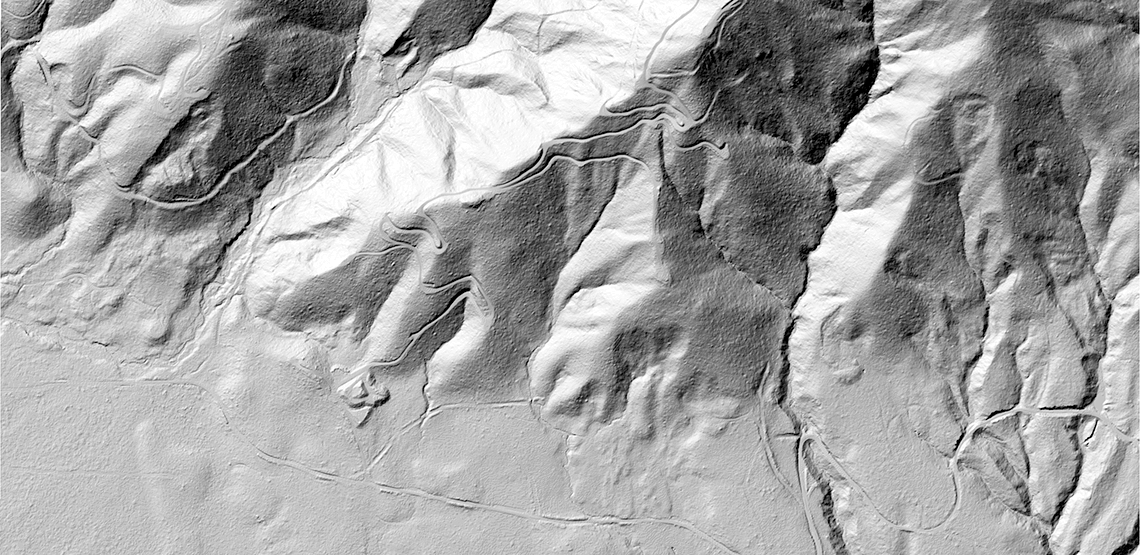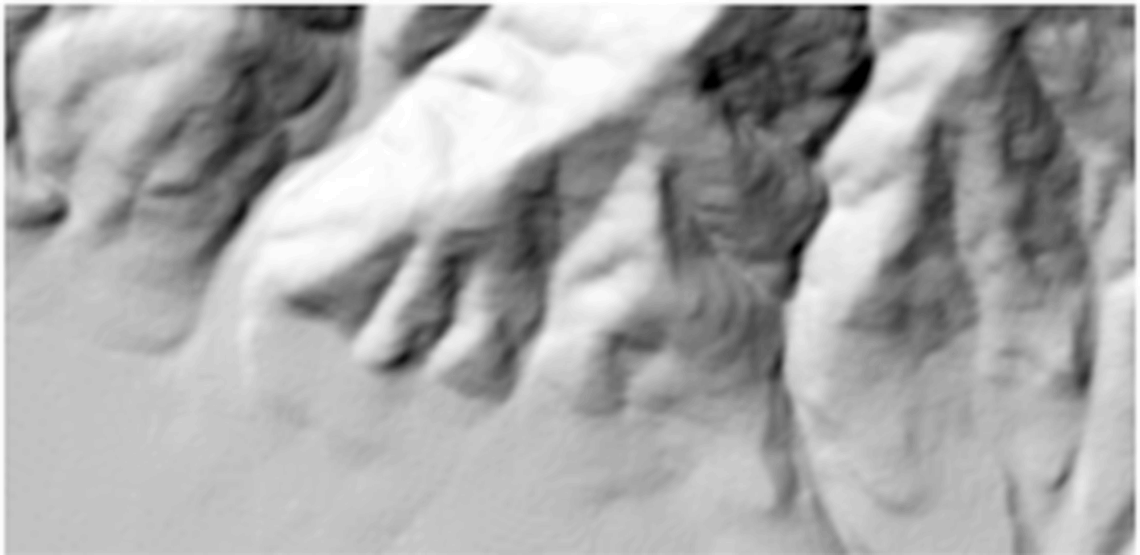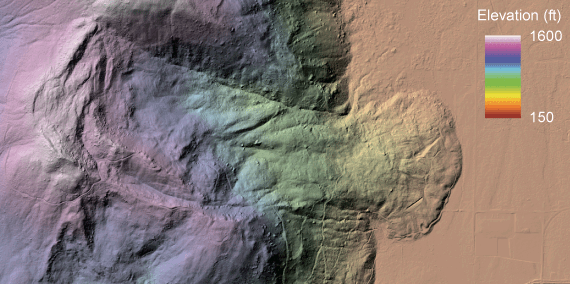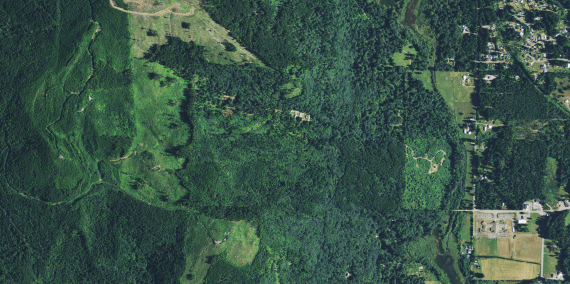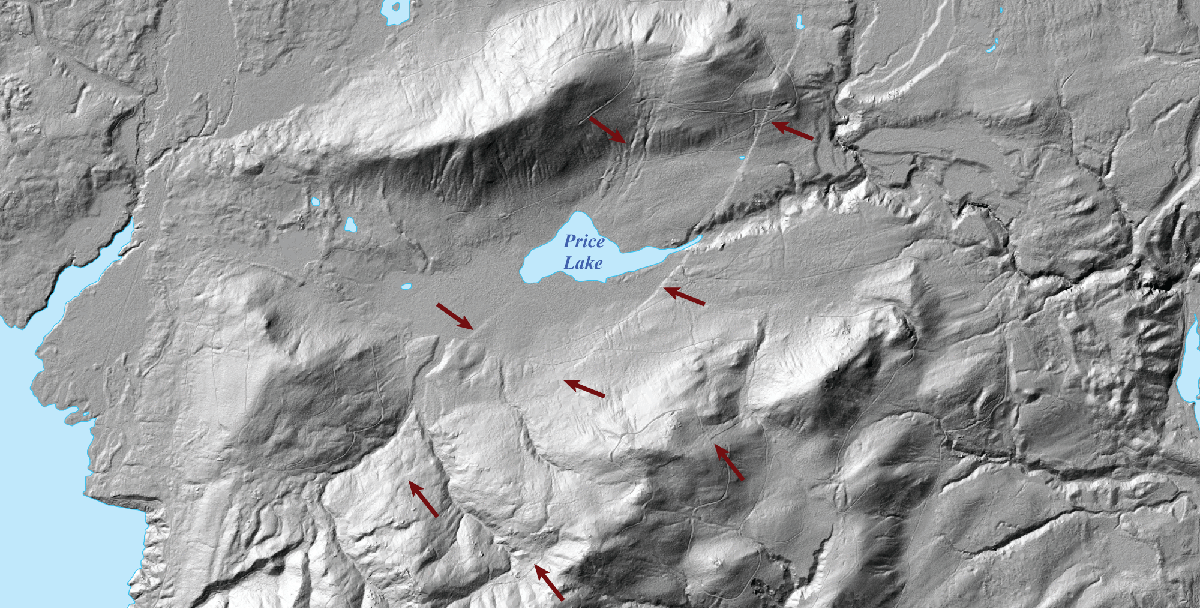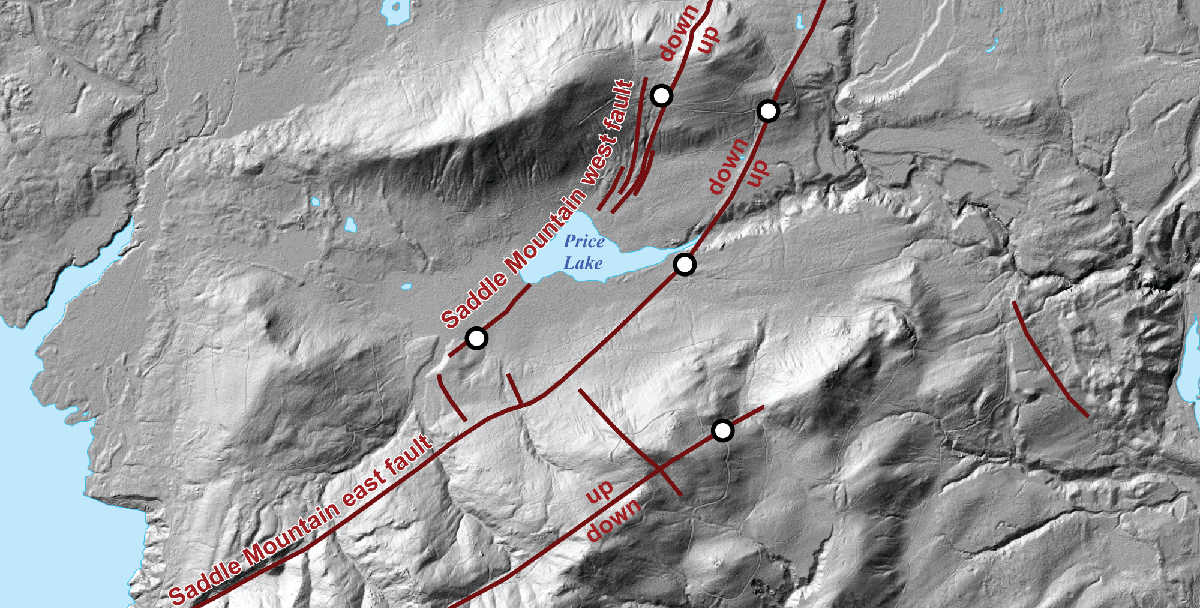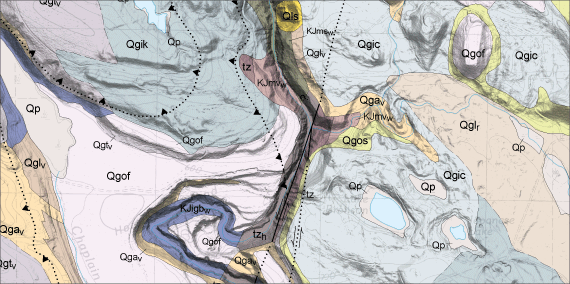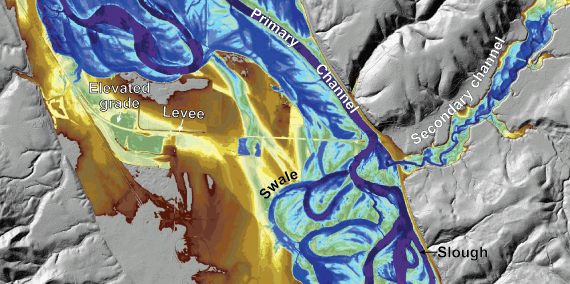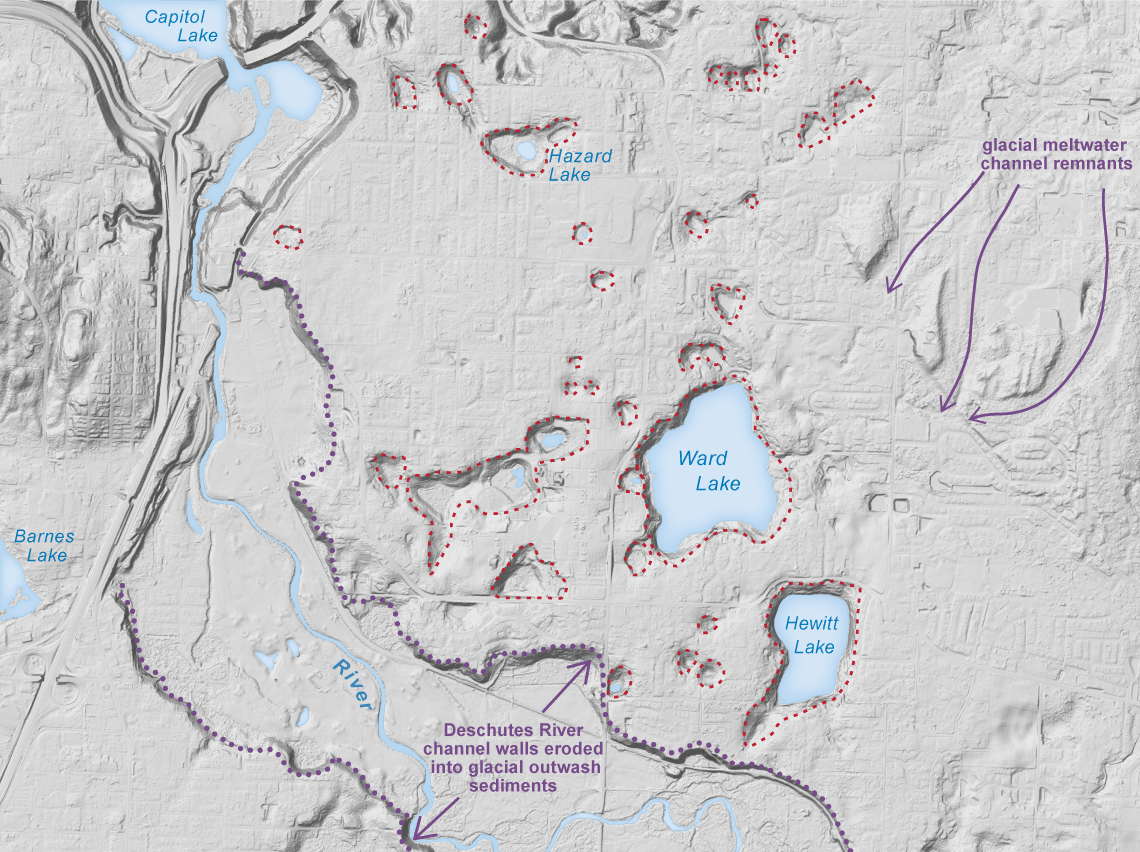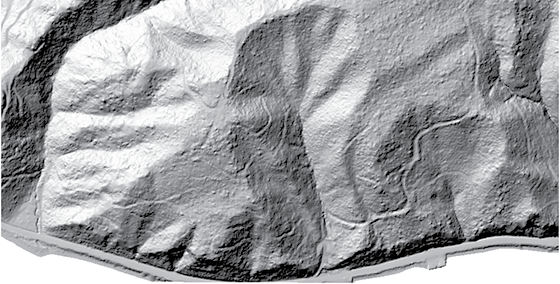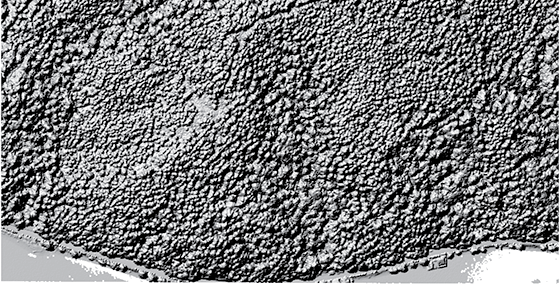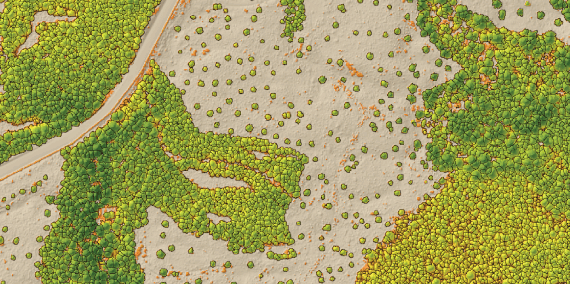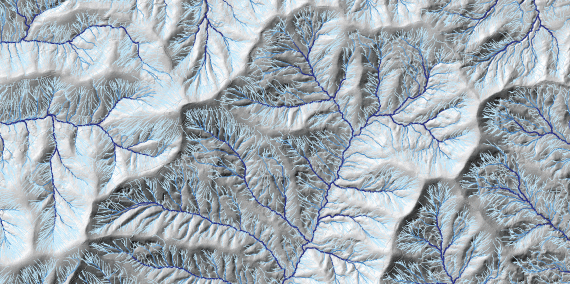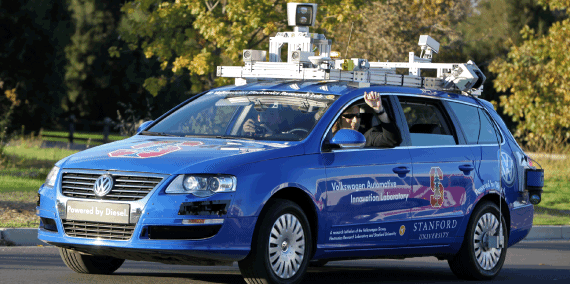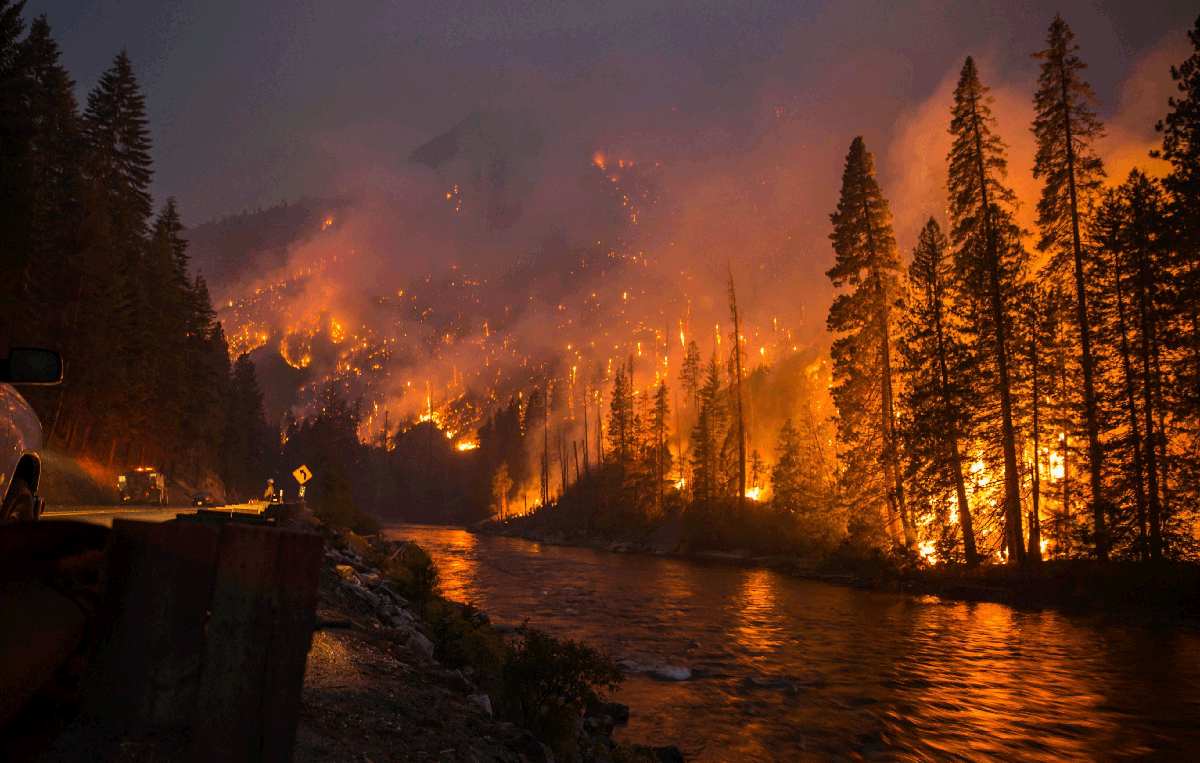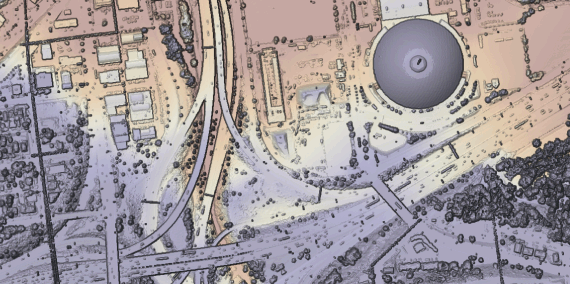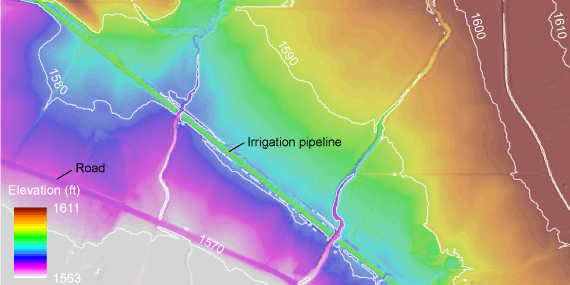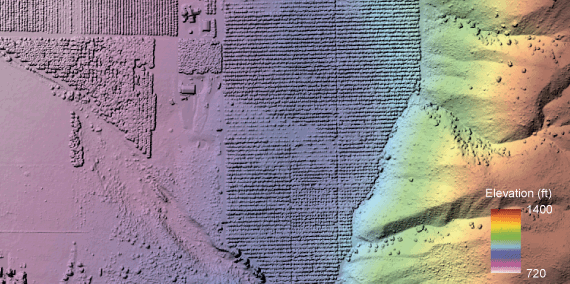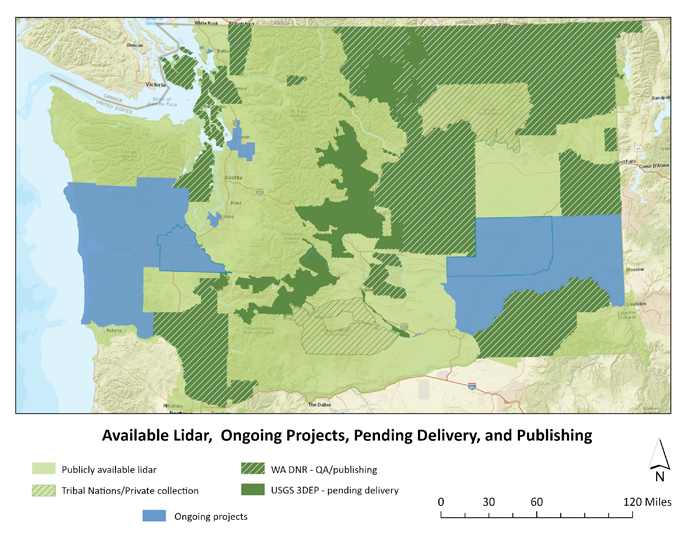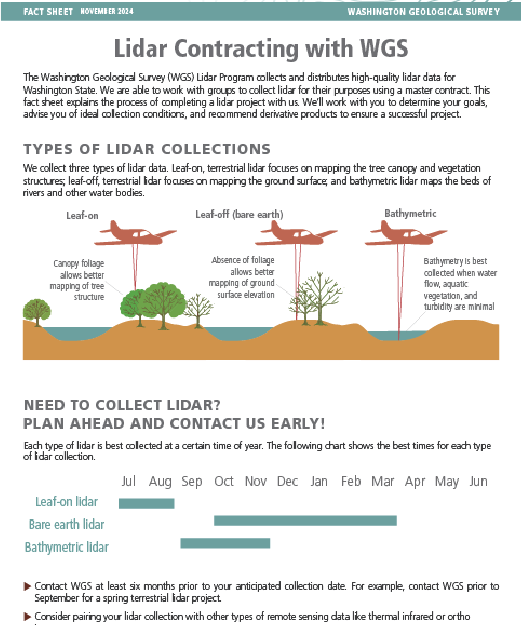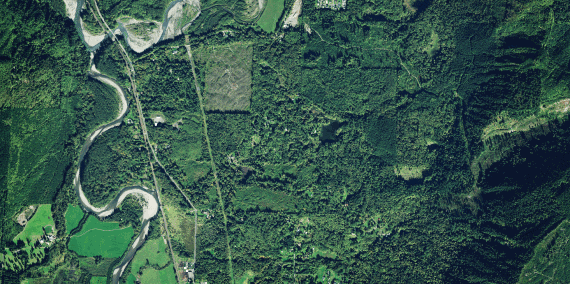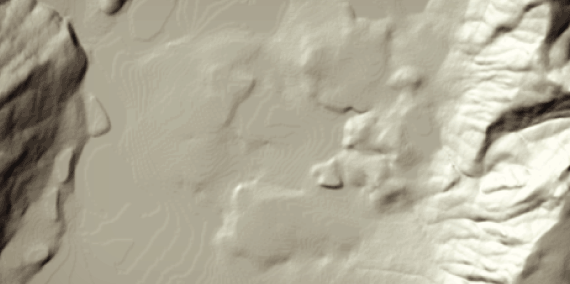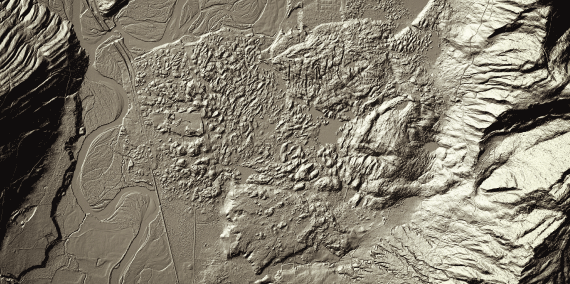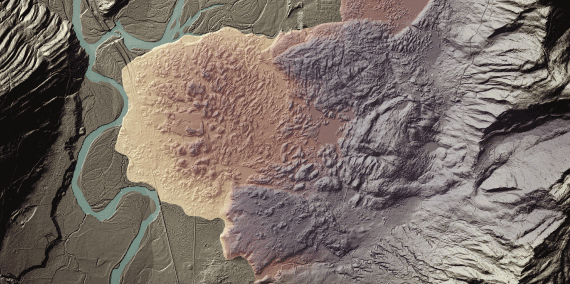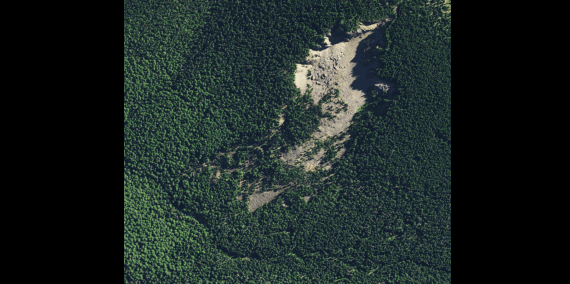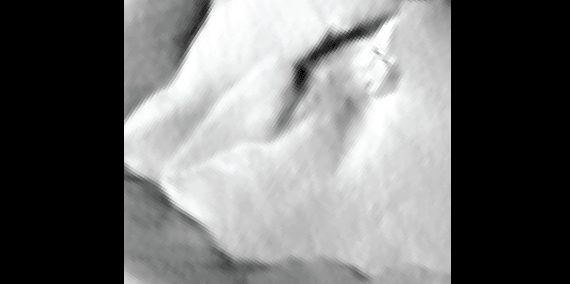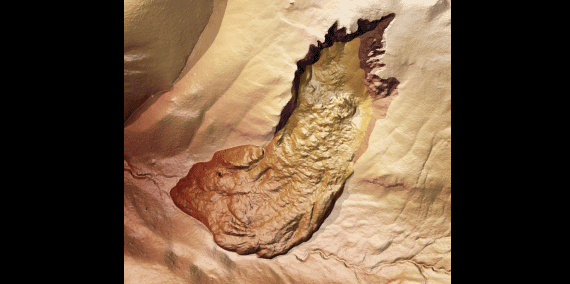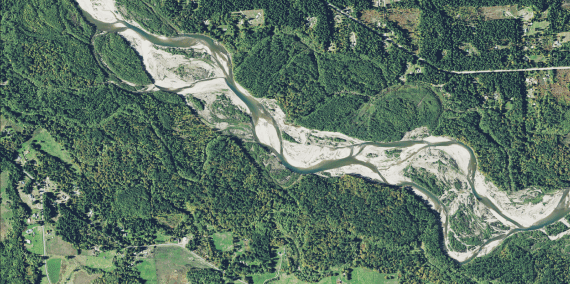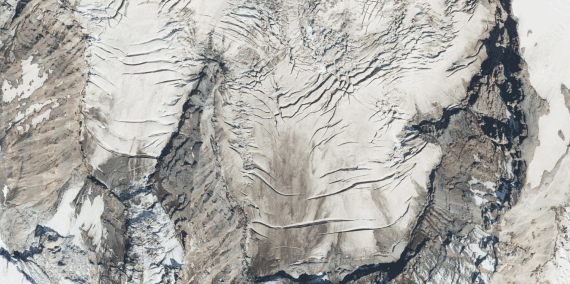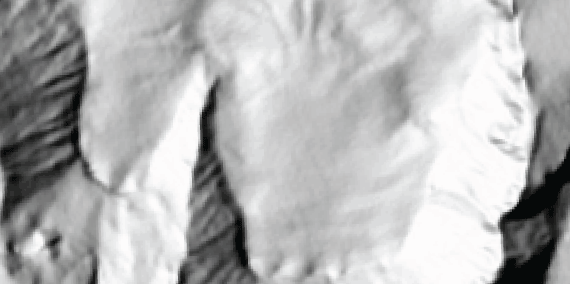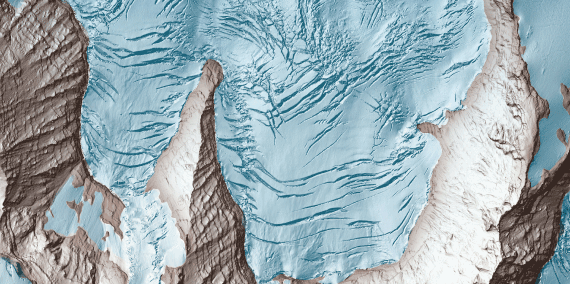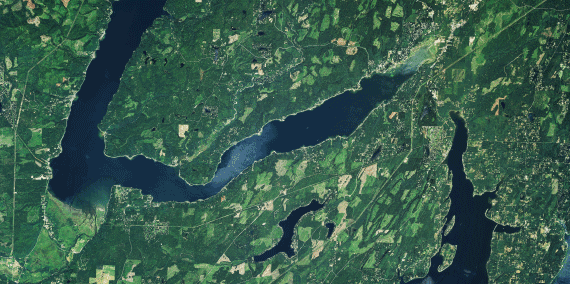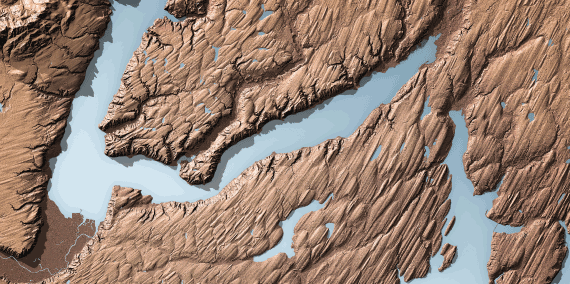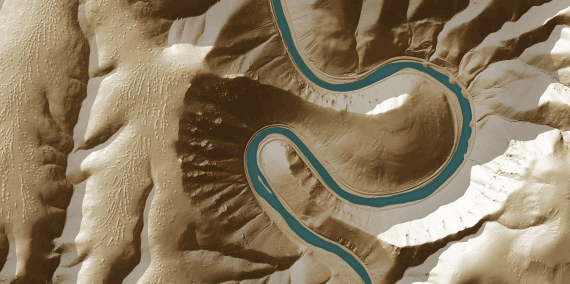In 2015, the Washington State Legislature mandated that the Department of Natural Resources, Washington Geological Survey collect, analyze, and publicly distribute detailed information about our state’s geology using the best available technology – lidar. The main focus of this new push for lidar collection is to map landslides, but there are innumerable additional benefits and applications of this data both inside and outside of the field of geology.
The Survey has set up a new lidar program and has begun collecting, inventorying, processing, and storing existing lidar data. New airborne lidar collection is underway, starting with areas at higher risk for landslides that do not already have high-quality lidar data.
[Read more]
What is Lidar?
Lidar stands for LIght Detection And Ranging and the physics behind it are pretty simple. By pointing a laser at a surface at closely spaced intervals and measuring the time it takes for light to return to the source, very accurate three-dimensional information can be obtained with sufficient measurments. Billions of these measurements can yield an extremely detailed three-dimensional rendering of the terrain.
Informative video of how lidar works, by the National Ecological Observatory Network (NEON).
The instrument that collects the data is made up of a laser, scanner, and a GPS receiver. For ground scanning operations, the laser is typically a near-infrared laser. For water based surveys, a green wavelength laser is typically used. Green lasers are visible to the human eye and will penetrate shallow water, making them ideal for coastal surveys. Near-infrared lasers are invisible and harmless to the eye, but cannot penetrate below the surface of water. Unlike green lasers, water absorbs the energy from the near-infrared laser rather than reflecting it.
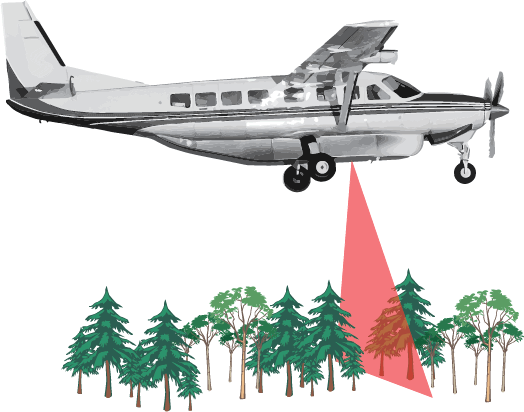
The instrument is mounted to a light aircraft, car, or static survey platform where an eye-safe laser measures objects with an accuracy of about 1 inch. Scanning over 100,000 points a second, the laser reflects off trees, buildings, streets, shrubs, people, and the ground. Flight paths are planned so that there is over 100% overlap of individual flight segments, such that a) every square meter of ground is covered twice and b) the number of points per square meter meets project specifications. A computer sorts the points and separates them for different uses, though it requires a specialist to process and interpret the lidar data.
The light is measured and calibrated using GPS, survey stations, and computer processing. Points representing the measurement locations are then created with a latitude, longitude, and height value. Millions to billions of points make up one dataset and are called point clouds. These points are sorted (classified) into different groupings according to what the laser hit. The main groups are first and last returns. First returns are the beams that reach the device first. This means they generally reflect the tops of vegetation, unless the ground is bare. The last return can be the ground surface, or it can return from low-lying vegetation. Dense forests, especially when leaves are on the trees, are difficult for the laser to fully penetrate. Using fancy computer algorithms, the returns are usually categorized into tree top, bare earth, buildings, vegetation, and water.
Lidar point clouds are used to create derivative products. Commonly, models show the surface of the earth without vegetation. Others elevation models depict information such as: forest canopy, slope angle, slope direction, stream flow, elevation contours, 3D models of buildings, people, and more.
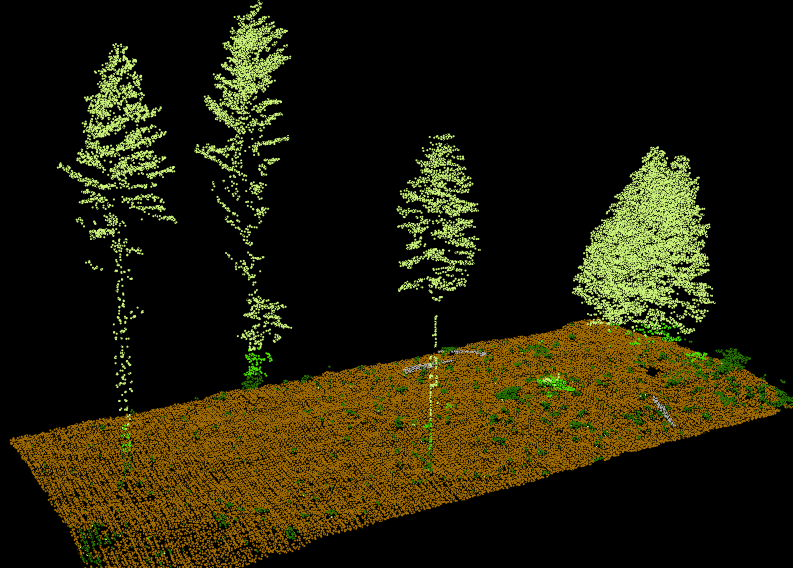
How is Lidar Used?
Lidar is widely used for many different applications. Some (but by no means all) of those uses are described below.
- Geology and Hazards
- Forestry
- Graphics
- Navigation
- Meteorology and Fire
- Land-use planning
- Archaeology
- Agriculture
-
In geology, bare earth models allow closer study of geomorphology, which is the study of the origin of the topography of the earth. Floods, faults, landslides, erosion, and glaciers leave their mark on the landscape, and while these marks can be hidden by dense vegetation, they can't hide from lidar.
Many, but not all, of the applications specific to geology are described below. Lidar is also used in natural resources conservation, water supply and quality assessments, river and stream resource management, and mining resource management.
Landslides
Before the use of lidar became widespread, geologists used aerial photographs, topographic maps, and field surveys to catalog landslides. This method is problematic in Washington because of the density of vegetation that often either obscures features or makes field checking difficult.
[Read more]
Faults
Signs of young faults include sag pongs, offset stream beds, and linear scarps. Lidar gives geologists the ability to find these features no matter what the ground cover is like or if the feature is partly eroded.
[Read more]
Geologic Mapping
Lidar allows geologists to find subtle geologic features that might be otherwise missed. Features such as landslides, faults, river terraces, drumlins, glacial outwash channels, alluvial fans, eskers, and fluting are readily apparent when high-quality lidar imagery is available. Landform analysis can be used to extrapolate field findings to correlate geologic units across different areas.
[Read more]
Flood Risk Management
Lidar is useful for many hydrologic applications. Floodplains can be mapped in detail. Models can be created to show where areas are at risk to flooding. Subtle river features, such as abandoned channels, ditches, terraces, and levees can be identified. This allows land managers and decision-makers to manage flood zones, preserve the natural functions of floodplains, and better craft emergency response procedures.
[Read more]
Tsunamis
Tsunamis are a potential threat in coastal regions. Lidar gives scientists an accurate surface representation of the ground, allowing models to more accurately predict where a tsunami could inundate an area. This modeling can give residents the ability to plan where to evacuate during an emergency.
[Read more]
Water and Ice
Lidar is used to monitor the growth or decline of glaciers. Repeated monitoring over the same area documents the effects of climate change or geologic activity. Additonally, geologists can use lidar to discern the glacial history from the last ice age.
[Read more]
Volcanology
Repeated measurement over time can be used to monitor volcanic activity. Mount St. Helens is an example of this, as lidar was used to document dome building at the summit between 2002 and 2004.
[Read more]
The Washington State Lidar Plan
The Washington State Lidar Plan provides an overview of lidar in Washington State for potential users of lidar data, such as cities, counties, state agencies, federal agencies, and tribes. The report includes an overview of past data collection efforts, a list of stakeholders, a summary of the value of lidar data, and a strategy for completing statewide lidar coverage. The plan includes priority areas and estimated funding. This is the State’s first formal statewide lidar plan, and it will be updated annually. Click on the image on the left to download the plan and don't forget to take a look at our accompanying Story Map!
Click here to download the Washington State Lidar Plan.
The plan represents a collaboration between the Department of Natural Resources (DNR) and the Office of the Chief Information Officer (OCIO). Contact Abby Gleason (DNR) or Joanne Markert (OCIO) for more details about the State Lidar Plan.
The Lidar Portal
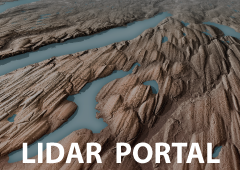 |
The Washington Department of Natural Resources Lidar portal currently offers the ability to download Digital Elevation Models (DEMs), hillshade derivatives, and point cloud data for about a third of DNR’s data holdings. We will continuously add to the site as we receive new datasets and make improvements, so check back often for updates! |
Lidar data can also be freely downloaded on the Puget Sound Lidar Consortium website. Other sites with Washington State lidar data include the Open Topography Interactive Map, the USGS National Map Viewer, and the NOAA Data Access Viewer.
Current Projects
The map below shows currently ongoing or planned lidar projects in Washington State.
If you are planning a lidar project or know about an ongoing project, we’d like to learn more! Please contact us.
How to Become a Partner
If your organization would like to partner with the Department of Natural Resources to fly lidar in areas not currently planned, please contact the Lidar Manager Abby Gleason for more details.
Lidar Story Maps
We currently have two lidar story maps.
The Bare Earth
Click here to view the story map in full screen mode.
The State Lidar Plan
Click here to view the story map in full screen mode.
Comparison Gallery
Examples of Lidar's Usefulness
Use your mouse to hover over the photo to see lidar reveal hidden and enigmatic "Manastash Mounds" near Yakima.

